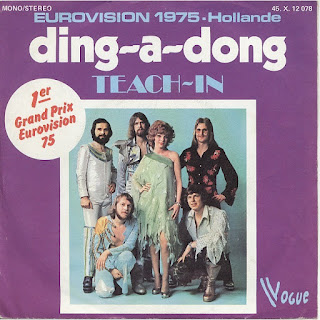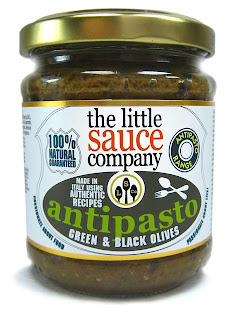I’m delighted to have been asked to be foreman of
D&AD’s Writing for Design jury this year. On 16 April, I’ll be getting together with friends and fellow copywriters
Nick Asbury,
Lisa Desforges and
Fiona Thompson, as well as
John Weich of Lemon Scented Tea and Interbrand Sydney’s
Christopher Doyle, to look over likely contenders.
It struck me that I should get my thoughts together and set down a marker ahead of the judging. Not only what I’ll be looking for on the day, but what I believe it takes to be successful in the writing for design world. So I’ve put together a 12-point ‘manifesto’ based on my personal observations and experience. Some points are pretty obvious, others maybe less so, but I hope they add fuel to the debate around this particular form of writing. Feel free to agree or disagree.
—
A writer’s dozen
Jim Davies’ 12-point manifesto on writing for design
1— Remember, all designers are different
There are some designers out there who really can write. There are others who appreciate good writing when they see it. And then there are those who can’t and don’t. The level of dyslexia among designers is astonishingly high — that’s probably why they’re designers and not writers. So the way your writing is perceived and received depends on not only how good it is, but who you’re dealing with. Maybe your words will transport the reader with unfettered delight, but on the other hand, be prepared to explain yourself or fight your corner. Just bear in mind that different designers (and clients) have different expectations and perspectives.
—
2— Know your place
A lot of writers moan about words not being given the respect they deserve. But they are missing the point. Good words deserve respect, bad words don’t. Besides, you can’t expect to be the star of the show in every performance — different design projects involve major or minor roles for the writer. You need to establish the part you’re expected to play from the outset. If you’re Hamlet, grab the opportunity with both hands. But if you’re Rozencrantz, make sure it’s a Rozencrantz to remember. And certainly, don’t let Guildenstern get a look in.
—
3— See your words
If a woman in a boilersuit and a man in a tutu utter exactly the same words, the effect is completely different. So before you start writing, it’s important to visualise what your words will look like when the reader sees them. How will the text and images relate to each other? What typeface will they be set in? What’s the format and medium? Too often, words and visuals inhabit the same world but look in totally different directions. Whereas they should be embracing like childhood friends.
—
4— Be yourself…
Of course you should be able to modify your tone and adopt different voices. One of the joys of writing for different brands is slipping into a variety of personas and being someone else for the day. But it’s also worth remembering that you’ve been asked to contribute for a reason — because the client wants a piece of you. Something about your personality or writing style has made an impression, otherwise they’d have asked someone else to do the job. Be a chameleon, by all means, but don’t be invisible.
—
5— …but don’t take it personally
No matter who you are, your drafts will be rejected and your best lines will be cut. You’ll be asked to write the same sentence over and over before the client decides he likes the first one best after all. Days will be long, repetitious and frustrating. You’ll have occasion to feel ignored, bullied and belittled. But most of the time, this will have absolutely nothing to do with you or the quality of your work. So you just need to keep smiling and do what you do until the sun comes out again.
—
6— Keep a lid on it
Too many punch lines can leave the reader punch drunk. Just like a good joke, writing for design is all about rhythm and timing, keeping it natural, not trying too hard. No one likes a show off, so try to curb your instinctive lexical dexterity. Of course, the odd clever analogy or deft turn of phrase doesn’t go amiss, but context is all. Think of a Paul Smith suit — impeccably tailored, but with a perfectly judged twist. Be disciplined, but know the precise moment to let go.
—
7— Be a stickler
When I worked on newspapers and magazines, there was a small army of sub-editors and fact checkers to make sure everything I wrote was correct — right down to the last dotted i. But writing for a brand or design company, the buck stops with you. You can argue as much as you like that spelling, grammar and punctuation don’t really matter anymore, but research has shown that a single spelling mistake can cut a website’s online sales by half. Punters equate shoddy spelling with shoddy service. It undermines your client’s credibility, making them look inept and even dodgy. So whether you like it or not, it’s your job to stop those typos in their tracks.
—
8— Break rules for a reason
Heeeey, I’m such a linguistic rebel. ‘And’ is my favourite way to start a sentence, and if there’s an infinitive around to mercilessly split, I’m your axe man. I’m not some kind of Trussed-up grammarian, but it’s almost become a rule to break the rules. Casual flouting is so commonplace that any impact or interest has long gone. It’s like swearing — do it all the time and it just wafts unnoticed into the fuggy atmosphere of expletives. Choose your moment carefully and it cuts like a blade. Sure, break the rules… but when you do, make it count.
—
9— Keep your distance
Call me old fashioned, but I like a bit of formality. I may not insist on being called ‘sir’ in a restaurant, but ‘are you guys ready to order?’ sticks in my craw. Similarly, the kind of ‘chattytastic’, over-familiar brand writing that’s become prevalent over the past few years is really starting to rankle. It’s like some irrepressibly cheeky chappie you’ve just met down the pub plonking himself on your sofa and telling you what you should be watching on TV. Too much of this writing is cocky, presumptuous and downright annoying. We keep being told that the modern consumer is a highly sophisticated creature, so maybe it’s time to show a bit of class and restraint. You know who you are.
—
10— Don’t jettison jargon
Once upon a time, I thought the merest whiff of jargon was unacceptable. If a word couldn’t be understood by the ‘man in the street’, I consigned it to the gutter. Often this meant using three words instead of one, or writing a really clunky sentence for the sake of common parlance. But actually, I’ve come to realise, it’s all about audience. If you’re writing for carpenters, call a skew chisel a skew chisel. A sailor will know what a baggywrinkle is. And similarly, if the business community feel comfortable with their resources and collateral and bottom lines, they can have them (up to a point). Only I draw the line at ‘leverage’.
—
11— Cut yourself short
I’ve tried to keep each of these segments to eight sentences or less. Any more would be a bore. Remember, commercial writing is uninvited and usually unwanted, people are time-starved and impatient. You need to make your point as quickly, convincingly and charmingly as possible. Preamble and mood setting are generally a luxury. Say what you need to say in as few words as possible, and say it well. Edit, edit, and then edit again.
—
12— Work, don’t shirk
This may sound a bit homespun, but you’ve got to put in the hours. In his book ‘Outliers’, Malcom Gladwell actually puts a figure on it… 10,000. That’s 20 hours a week for 10 years — just what the Beatles did. No matter how naturally talented you are, you need to hone and perfect that rough diamond until it shines like the Koh-i-Noor. The best writers for design are slightly obsessive types — brutally self-critical, they agonise over the small details, and are never satisfied with their work. If they’re not putting a shift in for clients, they’re busying themselves with personal projects. You’ve got to really want it, because if you don’t, someone else will.
—
 At this time of year, when the print edition of Design Week was still around, I’d often be found rounding up the best and the worst of the Christmas cards on offer. I would have been checking out the goods for personal consumption anyway, so this was the perfect way to kill two partridges with one stone.
At this time of year, when the print edition of Design Week was still around, I’d often be found rounding up the best and the worst of the Christmas cards on offer. I would have been checking out the goods for personal consumption anyway, so this was the perfect way to kill two partridges with one stone.








































